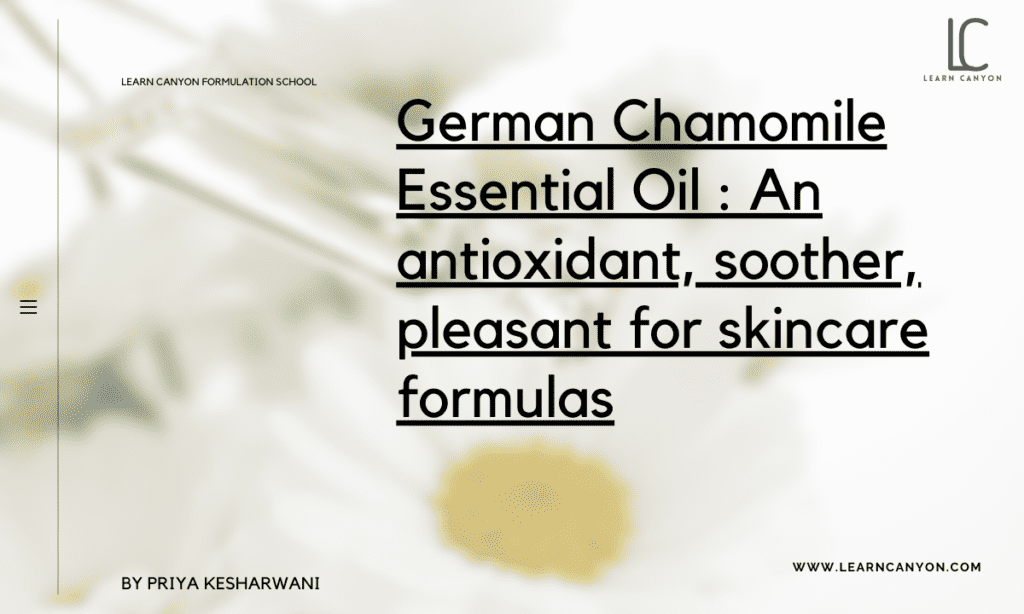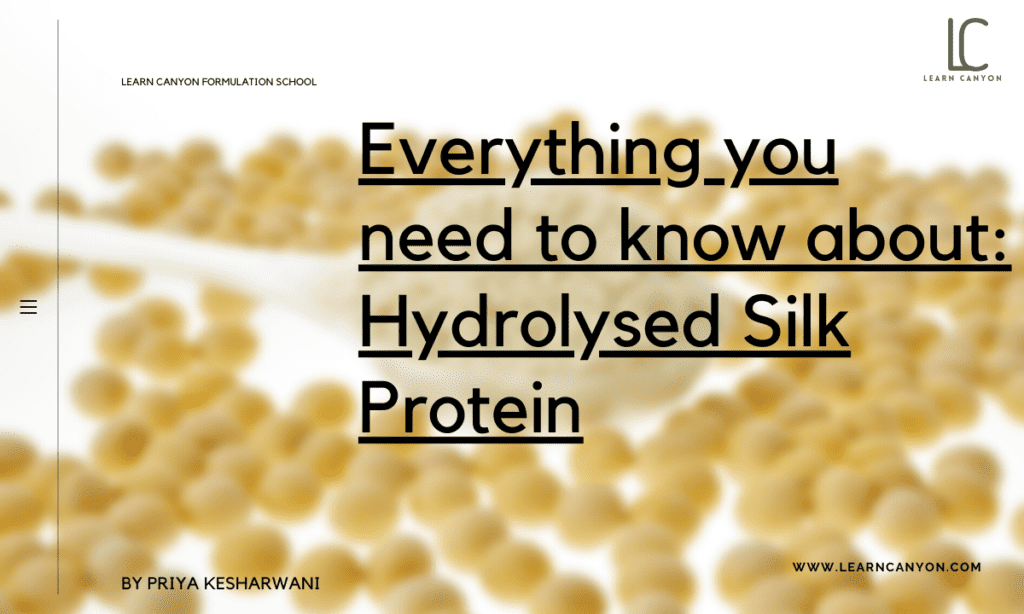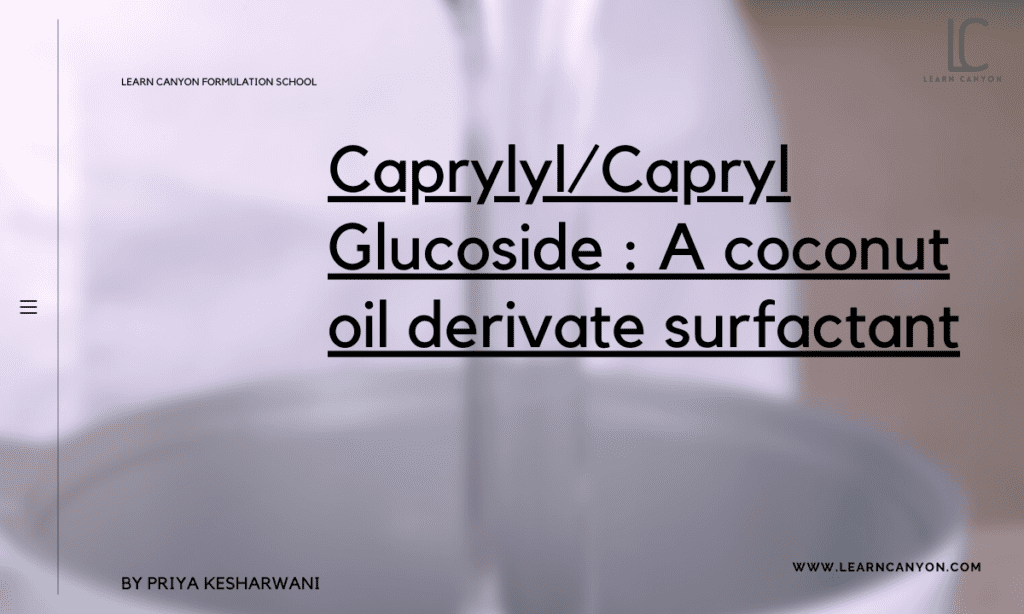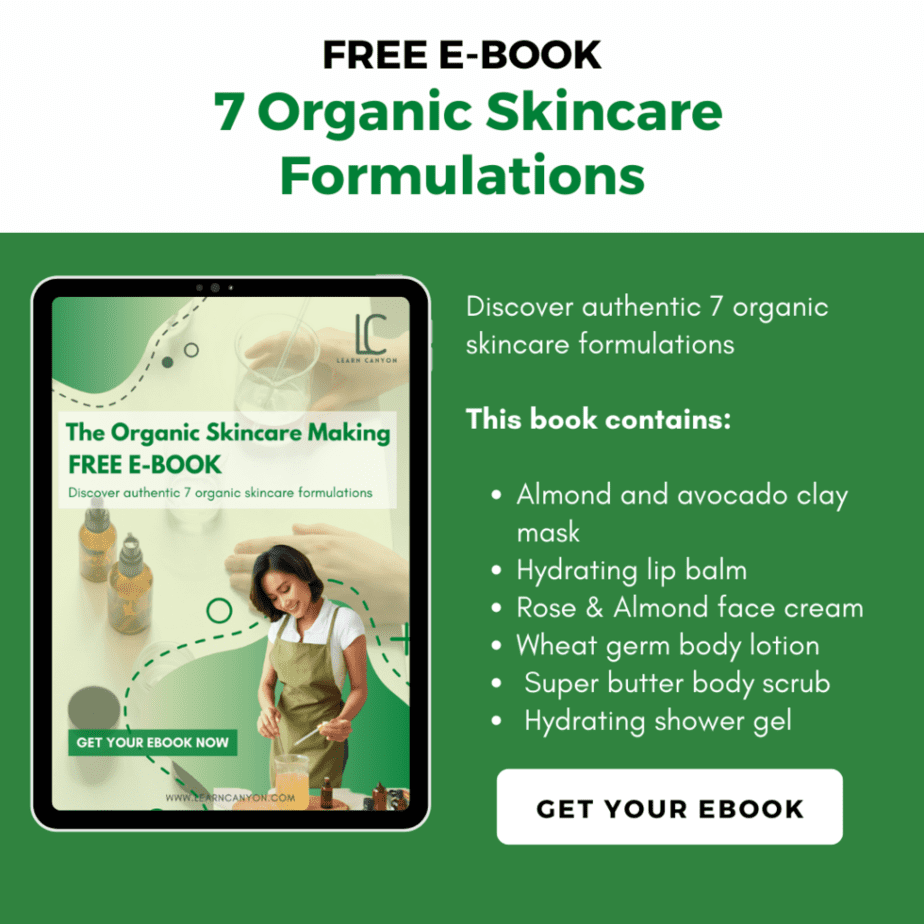
What is Hydrolysed Silk Protein

Hydrolysed Silk Protein
Your skin barrier affects both the health and the appearance of your skin. It protects you from pollutants and oxidative stress by acting as a physical barrier between you and the outside environment.
Silk proteins strengthen this barrier by producing a shield around your skin to protect it from outside aggressors. This aids in hydration retention and active substance stabilization, allowing them to work more effectively.
By maintaining the skin’s barrier function, silk proteins reduce fine wrinkles, smooth texture, and improve skin firmness and elasticity.
What is Hydrolysed silk protein?
Silk is a protein fibre derived from insect larvae. Bombyx mori, or mulberry silkworm larvae, are used to produce the most common silk. Silk protein is a fibrous protein made from the cocoon of a silkworm.
The collagen fibres that make up our skin have a similar molecular structure to it. Because silk is a protein fibre, it is chemically comparable to human skin.
This is why silk protein is so beneficial to one’s skin.
| What is it? | Silkworms produce silk, which is harvested from cocoons. |
|---|---|
| INCI | Hydrolyzed silk protein |
| Appearance | A white to off-white powder or liquid with a little granularity. |
| Texture | Smooth |
| Recommended Usage | 2–5% |
| Solubility | Water soluble |
| Melting point | NA |
| Boiling point | NA |
| pH | 5–7 |
| Aroma | Characteristic odor |
| Why do we include it in formulations? | Silk is a fantastic moisturising agent. It forms a very thin coating on the skin, which helps to smooth it out and minimise trans-epidermal water loss. |
| How to work with it? | It can be added to the warm water phase or cold-processed if necessary. |
| Applications | Silk protein is a hydrating, anti-aging, and pollution-fighting skincare ingredient that improves your overall luminosity and glow. Silk that has been hydrolyzed enhances suppleness and a smooth appearance. |
| Absorption rate | Fast |
| Strength | High molecular weights can give smoothness and shine to skin and are an excellent hydrating component that decreases water loss. |
| Weaknesses | It's not vegan, and it has a bad odour. |
| Substitution | Oat, baobab, quinoa, and rice. |
| How to store it? | Heat / Freezing / Light Protected, Tightly Sealed |
| Shelf life | Silk that has been hydrolyzed should survive two years or more. |
Fast facts
| Type of ingredient | Promotes elasticity and a smooth complexion |
|---|---|
| Main benefits | Hydrolyzed silk protein, when utilised in skincare products, aids the skin's water barrier in retaining moisture. It also gives off a beautiful shine. |
| Who should use it | For all skin types. |
| How often can you use it? | Every six to eight weeks |
| Works well with | Your average sunscreen to skin creams |
| Doesn't work with | Because there is a risk of protein overload, products also include keratin. |
| How to use | Water phase of your formulation. |
Mechanisms of action
Silk protein is a fibrous protein obtained by converting silk from a silkworm’s cocoon. It has a similar molecular structure to the collagen fibres that make up our skin.
It increases skin elasticity, speeds up skin cell function, reduces wrinkles, and tightens and smoothes the skin naturally. Sericin and fibroin are two particular proteins found in silk that provide skincare advantages.
SERICIN: The outer layer of silk protein, sericin, aids in the binding of silk strands into a cocoon. It aids in the coagulation and healing of wounds, therefore lowering the risk of infection. Sericin is the most frequent silk protein found in hair products. This is due to the fact that silk proteins aid in the prevention and healing of hair damage.
FIBROIN: Fibroin is a protein that is found in the blood Fibroin is a protein found on the skin.
The benefits of Hydrolysed silk protein
Silk contains two specific proteins, sericin and fibroin, which have skincare benefits. Sericin helps to hydrate the skin by forming a protective layer on top of it. Fibroin aids in the repair of skin cells as well as moisture management.
These are some of the reasons why, if you haven’t already, you should switch to silk protein-based skincare.
- Silk protein is similar to human keratin and aids in keratin formation.
- 18 amino acids are found in silk protein. More than ten of these amino acids are comparable to those found naturally in the skin.
- Silk’s nutrients are organically attached to skin cells and absorbed when they enter the body.
- Silk protein helps to keep the skin’s surface film in good shape. This film on the epidermis’s outermost layer protects the skin by preventing it from being irritated by external influences, as well as preventing water from evaporating.
Side effects of Hydrolysed silk protein
Because of all of its amazing skin-boosting effects, silk protein is renowned as the superhero ingredient of skin care. There are no negative side effects as a result of this.
How to use it in formulation?
It must be included in the aqueous phase. It should be added to emulsions after they have developed and at temperatures below 104 degrees Fahrenheit (40 degrees Celsius). It can be washed away with water. 2% to 5% usage rate.
Work well with other ingredients
Hydrolyzed silk protein works well with most of the ingredients.





